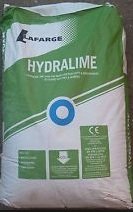How to Practice Plastering
Backing Coat
Practice plastering on an old wall in your home, in a garage or shed.
Deciding to plaster a real wall or cover with a false practice wall
If you are happy to get plaster onto a real wall then that is fine, but if you do not want to ruin the brickwork in your garage, or your partner is not too happy about you plastering a wall in their house then a false wall can be used. If you intend to plaster in a shed a false wall may be needed.
Plasterboard, Sheathing Ply or OSB (Sterling) Board
Simply fix one two or even three boards to an existing wall so that they can easily be removed when finished. The fixing just needs to be enough to ensure that it will not fall away from the wall or is not too flexible and springy.
Normally backing coat plaster will not stick to plasterboard or wood but for practising purposes it will be fine.
The Plaster
The easiest plaster to use is a sand & lime plaster mix due to the fact that it can be reused again and again.

Type of Lime
Non hydraulic Lime such as Hydrated lime available from all builders merchants (if it has NHL on it then this is the wrong type – you want a non-hydraulic lime such as Hydralime)
The Mix
3 Parts Soft sand to 1 Part Lime. Mix with water until a smooth creamy consistency is achieved. The thickness needed is something similar to a thick custard – if it's too thin you'll struggle to control it – if it's too thick it will make your arm ache!
It can be dusty so you may not want to mix in a nice clean house. The best way to mix is in a Plasterer's mixing bath where the combination of a shovel and whisk can be used, without danger of water going everywhere. However it can be mixed on a board with a shovel, in a bucket with a whisk or in a cement mixer.

The bath works well as once you've finished plastering the wall the plaster can be scraped off the wall- back into the bath and remixed. If it is kept covered with polythene to stop it drying out it can be used again and again at any time in the future.
Non-hydraulic lime only hardens as it dries – it never sets. As long as it doesn't dry out totally you'll be able to bring it back to life. Even if it does dry totally if you crush the lumps they can be remixed with water for re-use.
Once mixed and if properly managed – never left to totally dry out you'll have a mix you can practice plastering with time & time again.
Controlling the Suction
If using a false wall of plasterboard or OSB there will be relatively little suction if any and so you can start plastering straight away. However if you intend to practice plastering on a real wall where the wall substrate is porous you will need to do the suction test
Skim Coat
Deciding to use a real wall or cover with a false practice wall
A skim coat can only be applied to a backing coat, plasterboard or a previously plastered wall treated with PVA. You may have an old previously plastered wall that is suitable, but if not then a false wall of plasterboard or OSB Board can be used. These boards do need to be nice and flat so care should be taken when fixing. The plaster will not easily come away from any of these surfaces so it should be assumed that if you are plastering a real wall you will ensure that the plaster is always kept flat to ensure that you leave no bulges anywhere that will prevent a nice finish from being obtained in the future. If in doubt – a false wall to practice on may be safer.
The Plaster
If you are intending to use lime as a skim coat then you can also use the same lime as above to use for skimming (without the sand or with fine sand in the ratio of 1:1). However you probably only want to consider using lime if you have to or really want to for whatever reason as it is not always the easiest material to use.
Using Multi-finish is normally the safest option as it is easy to use and will cope with most surfaces. This will not be able to be re-used but at around £5 for a bag that will cover 10 square metres it will give you at least 3 attempts.
Once you have been through the 6 stages of skimming hopefully if nothing else you will have a flat surface to which you can apply PVA to and re-skim. This same wall can be skimmed up to a possible 30 times, the only time to try and remove it from the wall is when it is too undulating ( a skim coat should be applied to a reasonable flat surface +/- 3 mm), or if the wall is becoming too heavy.
Controlling the Suction
If using a false wall from plasterboard or OSB there will be relatively little suction if any and so you can start plastering straight away. However if you intend to practice plastering on a real wall you'll probably meed to treat with PVA.
Practice Plastering
It is easy to practice plastering and like anything I guess - practice makes perfect!
If you have any questions - ask here